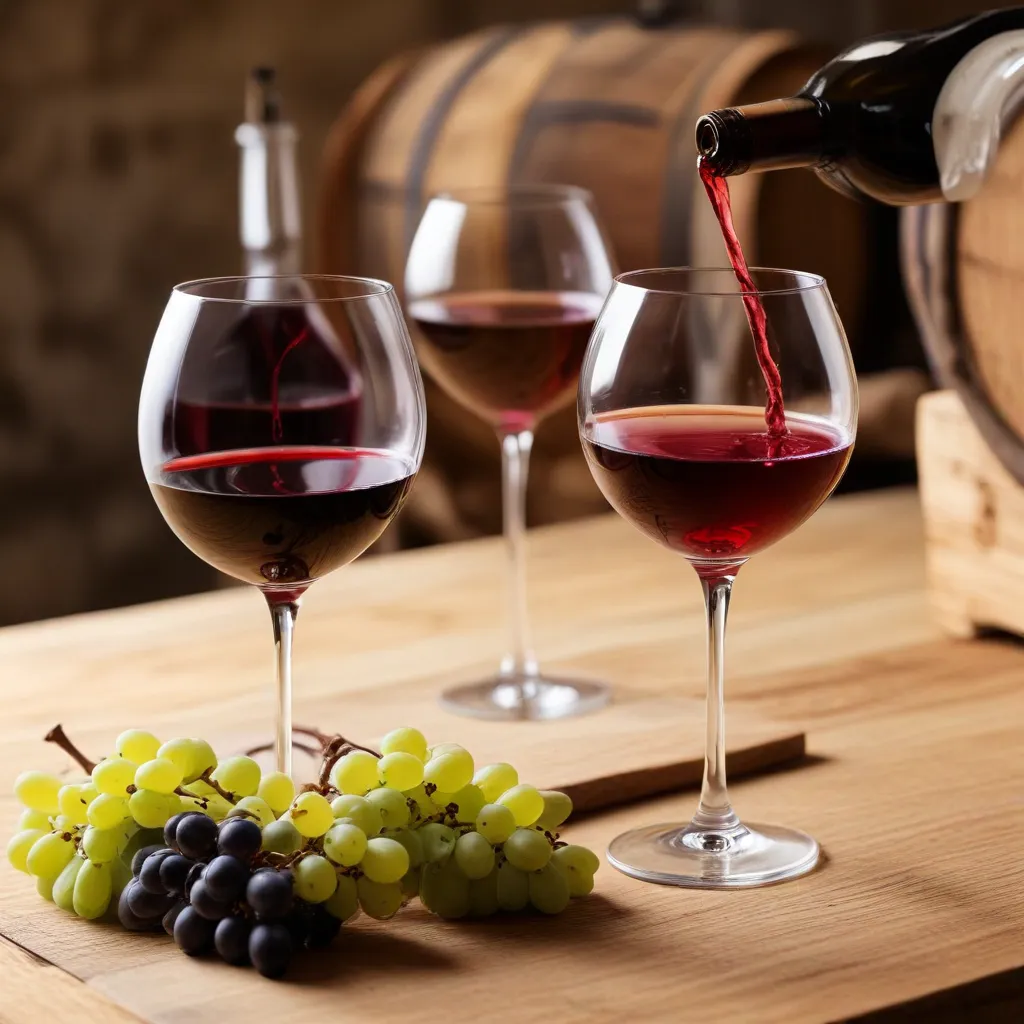
The world of wine is a captivating interplay between science and art, where the intricacies of chemical composition and sensory perception converge to create a multifaceted tasting experience. As a hospitality and wine expert at the Wine Garden Inn, I’m thrilled to delve into the fascinating science that underpins the art of wine tasting.
The Chemical Composition of Wine
At the heart of every glass of wine lies a complex symphony of organic compounds, each contributing to the drink’s aroma, flavor, and mouthfeel. Alcohol, the primary intoxicating component, plays a pivotal role in shaping the overall sensory profile. The concentration of ethanol, typically ranging from 11% to 15% in most wines, affects not only the perceived “heat” on the palate but also influences the perception of other flavor nuances.
Alongside alcohol, a diverse array of volatile organic compounds, such as esters, terpenes, and sulfur-containing molecules, lend their unique aromas to the wine. These compounds are derived from the grapes, yeast metabolism, and the winemaking process, and their interplay creates the captivating bouquet that wine enthusiasts delight in.
The acidity of a wine is another critical factor that influences its taste. Compounds like tartaric, malic, and citric acid contribute to the wine’s refreshing tartness and balance, playing a crucial role in the overall flavor profile.
Sensory Perception in Wine Tasting
Wine tasting is a multisensory experience that engages the eyes, nose, and palate. The visual cues, such as the wine’s color and clarity, provide the first clues about the wine’s age, grape variety, and potential flavor profile. Swirling the wine in the glass allows the taster to observe the “legs” or “tears” that form, which can indicate the wine’s viscosity and alcohol content.
The sense of smell is arguably the most important aspect of wine tasting. The volatile compounds in wine stimulate the olfactory receptors, allowing the taster to perceive a vast array of aromas, from delicate floral notes to bold, earthy undertones. Skilled tasters can often identify specific grape varieties, aging processes, and even regional characteristics based on their olfactory assessment.
The gustatory experience of wine tasting involves the interplay of several sensations on the palate. The perception of sweetness, sourness, bitterness, and umami are influenced by the wine’s chemical composition, particularly the balance of sugars, acids, and phenolic compounds like tannins.
The Winemaking Process
Producing a bottle of wine is a complex and meticulously orchestrated process, with each step contributing to the final product’s unique characteristics. The journey begins in the vineyard, where the terroir – the combination of soil, climate, and viticultural practices – plays a crucial role in shaping the grape’s flavor profile and quality.
During the fermentation stage, yeast metabolizes the sugars in the grape juice, converting them into alcohol and a variety of byproducts that contribute to the wine’s aroma and mouthfeel. The use of oak barrels during aging can also impart additional layers of complexity, such as vanilla, spice, and toasted notes.
The duration and conditions of bottle aging further transform the wine, as the chemical reactions and physical changes that occur over time refine the wine’s character and integration of flavors.
Tasting Technique and Evaluation
Mastering the art of wine tasting requires a systematic approach that engages all the senses. The appearance of the wine, from its clarity to the depth of color, provides initial clues about the grape variety, aging, and potential flavor profile.
The aroma evaluation involves swirling the wine in the glass to release the volatile compounds, then taking a deep inhalation to identify the broad spectrum of scents, from fruits and flowers to more complex, earthy notes.
The palate analysis is where the true magic of wine tasting unfolds. The wine’s texture, acidity, tannins, and flavors are carefully evaluated, with experienced tasters able to discern the varietal characteristics, terroir, and even the winemaking techniques employed.
The Chemistry of Wine Tasting
At the molecular level, the unique chemical composition of a wine is responsible for the diverse array of flavors and sensations experienced during tasting. Volatile compounds, such as esters and terpenes, contribute to the wine’s aromatic profile, while nonvolatile compounds, like phenols and glycerol, influence the mouthfeel and perceived sweetness.
The phenolic compounds, particularly tannins, play a crucial role in the wine’s structure and astringency. These compounds, derived from the grape skins, seeds, and oak barrels, can create a drying sensation on the palate, adding complexity and depth to the tasting experience.
The residual sugars left over from the fermentation process can also have a significant impact on the wine’s perceived sweetness and overall balance, complementing the acidity and tannins.
Conclusion
The art of wine tasting is a captivating dance between science and sensory exploration. By delving into the intricate chemical composition of wine and understanding the mechanisms of human perception, we can unlock a deeper appreciation for the complexities and nuances that make each sip a unique and engaging experience.
Whether you’re a seasoned oenophile or a curious wine enthusiast, the science behind wine tasting offers a fascinating window into the world of viticulture and enology. So, the next time you raise a glass, take a moment to savor not just the flavors, but the remarkable chemistry that makes each wine a true work of art.
For more information on our estate-grown produce, gourmet breakfasts, food-wine pairings, and behind-the-scenes of our winemaking journey, be sure to visit Wine Garden Inn.
